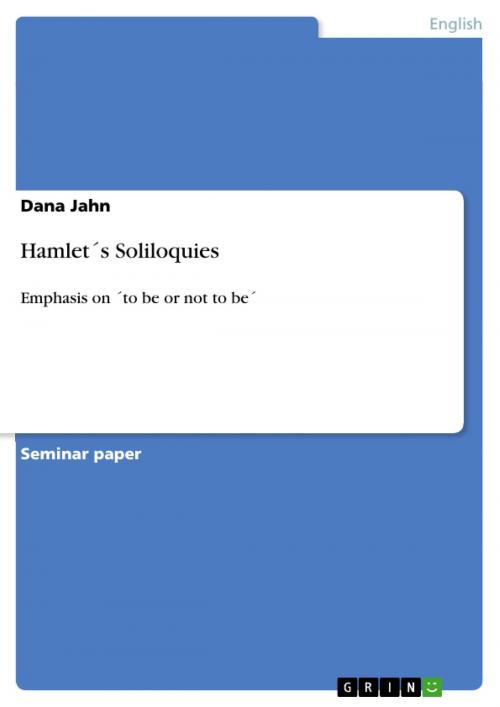Hamlet´s Soliloquies
Emphasis on ´to be or not to be´
Fiction & Literature, Literary Theory & Criticism, British| Author: | Dana Jahn | ISBN: | 9783640575602 |
| Publisher: | GRIN Publishing | Publication: | March 25, 2010 |
| Imprint: | GRIN Publishing | Language: | English |
| Author: | Dana Jahn |
| ISBN: | 9783640575602 |
| Publisher: | GRIN Publishing |
| Publication: | March 25, 2010 |
| Imprint: | GRIN Publishing |
| Language: | English |
Seminar paper from the year 2009 in the subject English Language and Literature Studies - Literature, grade: 1,0, University of Vechta, language: English, abstract: William Shakespeare´s ´Hamlet´ is of great cultural significance. It was published around 1600/1601, marking the transition from the 16th to the 17th century. It reflects upon spiritual and cultural conflicts of the Elizabethan period more intensively than any other literary work. It includes a variety of philosophical, theological, political, literary and general references. With Hamlet, a new form of interiority is born, 'the sense of being inside a character´s psyche and following it´s twists and turns.' This interiority is predominantly shown to the audience by the use of soliloquies. Shakespeare´s lifework includes a great variety of soliloquies. Hamlet is commonly associated with one phrase: ´to be or not to be`. In this work, I am going to give an overview of Hamlet´s soliloquies, concentrating on `to be or not to be´. Before that, I am going to briefly explain the difference between soliloquy and monologue.
Seminar paper from the year 2009 in the subject English Language and Literature Studies - Literature, grade: 1,0, University of Vechta, language: English, abstract: William Shakespeare´s ´Hamlet´ is of great cultural significance. It was published around 1600/1601, marking the transition from the 16th to the 17th century. It reflects upon spiritual and cultural conflicts of the Elizabethan period more intensively than any other literary work. It includes a variety of philosophical, theological, political, literary and general references. With Hamlet, a new form of interiority is born, 'the sense of being inside a character´s psyche and following it´s twists and turns.' This interiority is predominantly shown to the audience by the use of soliloquies. Shakespeare´s lifework includes a great variety of soliloquies. Hamlet is commonly associated with one phrase: ´to be or not to be`. In this work, I am going to give an overview of Hamlet´s soliloquies, concentrating on `to be or not to be´. Before that, I am going to briefly explain the difference between soliloquy and monologue.















